
In 1965 the idea of the Black Star Co-op was born at Central United Church of Christ. In 1968, the year after the Detroit riot, a grocery store was opened a block from the church. Due to a variety of reasons – inexperience of management and staff, costs of keeping enough stock, high prices – the store did not last long. Later the church operated a long running food co-op. Several people would go down to Eastern Market early Saturday morning and buy produce which was shared by everybody who paid $5 that week. There was no overhead and no paid staff. Later the church had a farm in Belleville, Michigan and the food for the co-op came off of that farm. Below is a short photographic story of the Black Star Market.

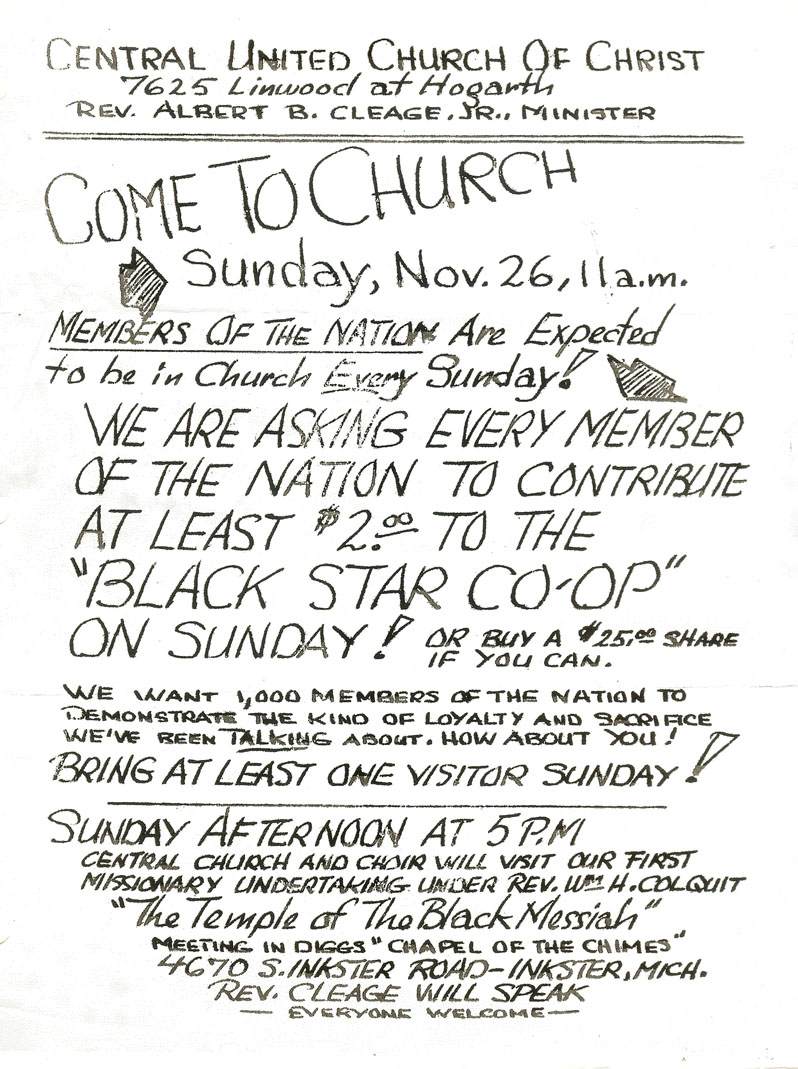
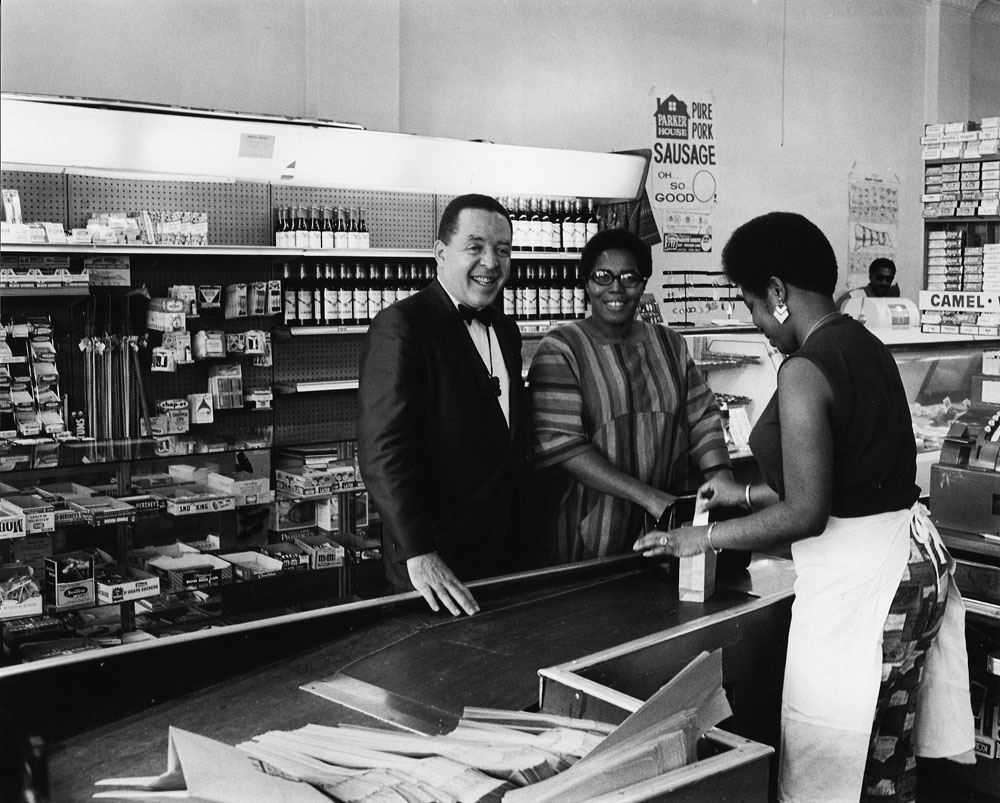
To read more about the church and the street it stand on, click on these links: “L” is for Linwood (About the street of Linwood), “H” is for Linwood and Hogarth (About the church).
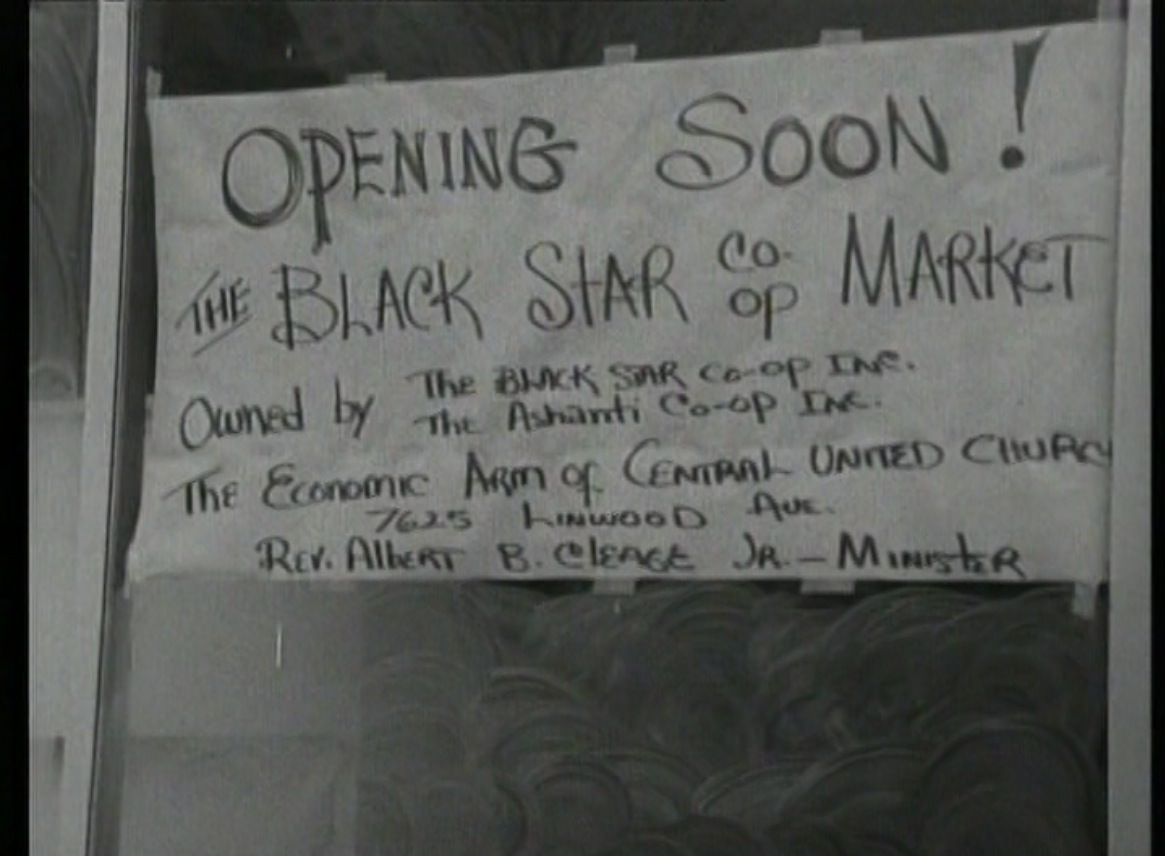
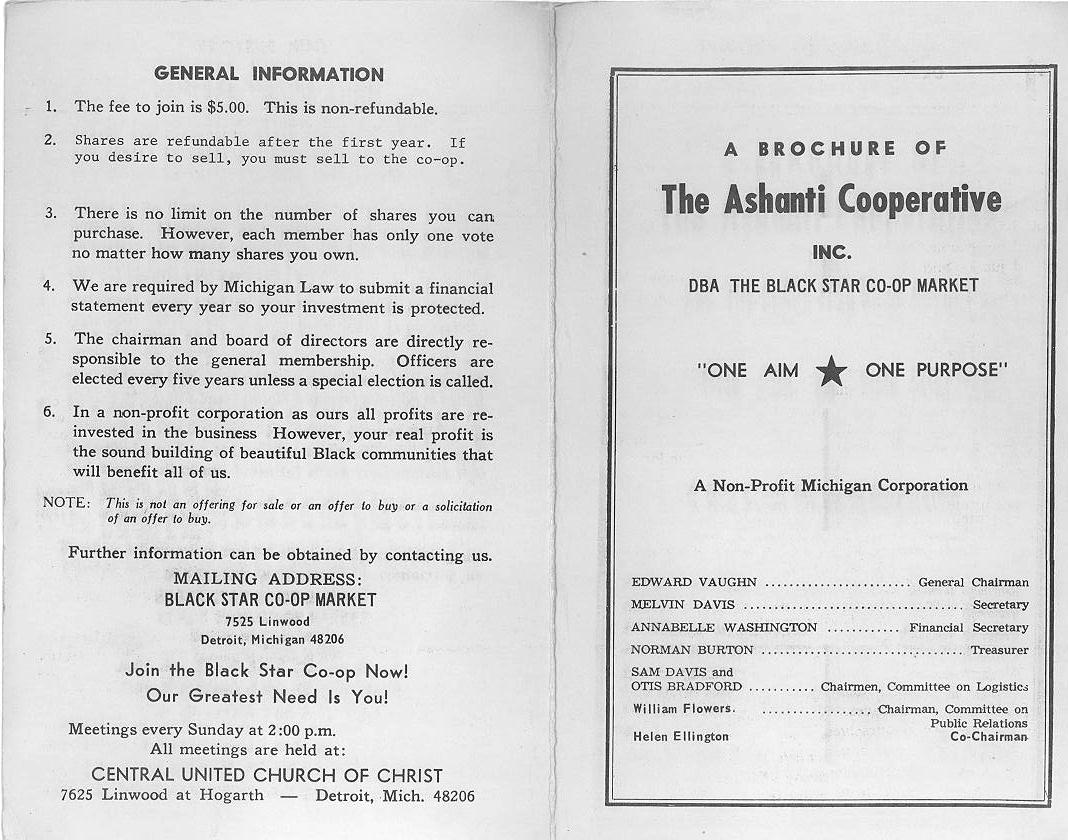
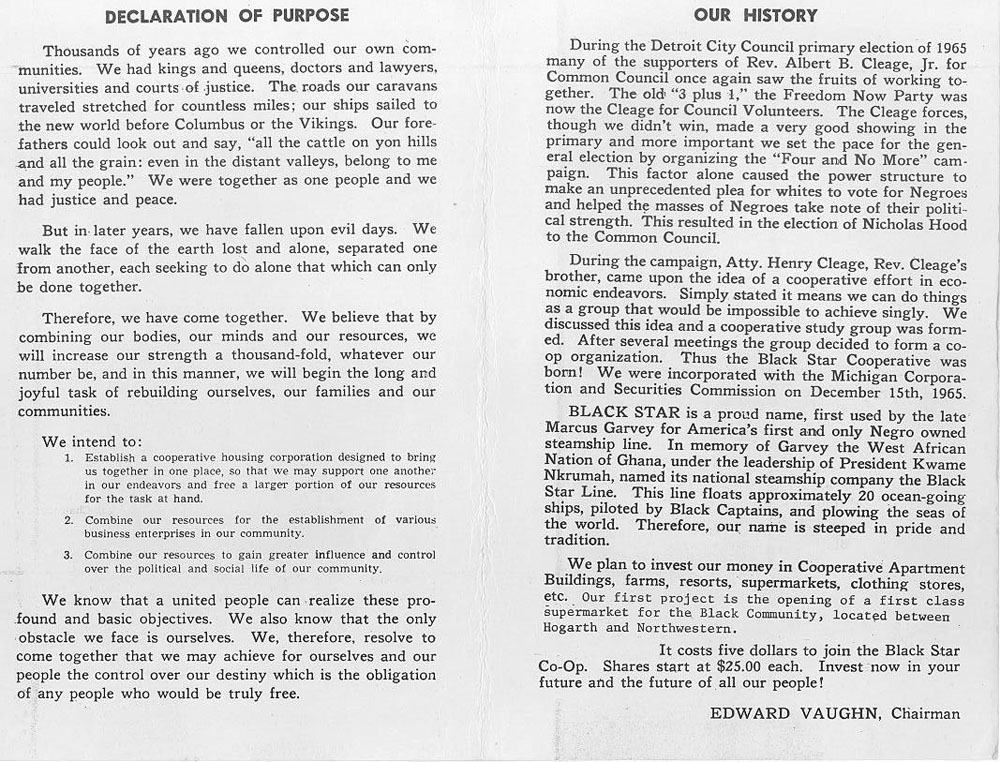

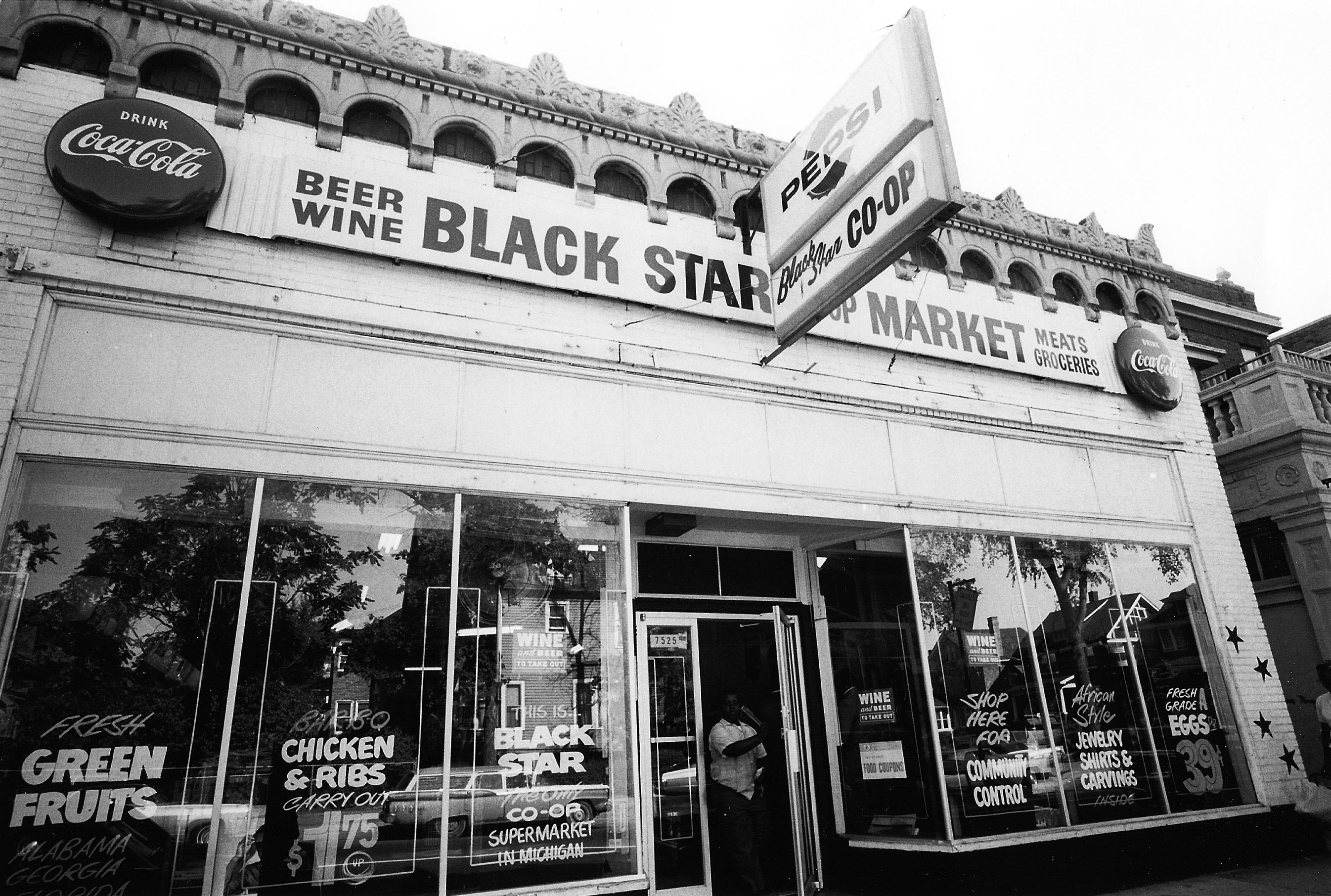

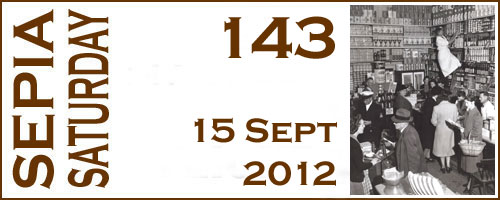
An interesting enterprise!!
We still have those where we can buy shares into some local farmers’ crops grown “bio”,
insuring better eating.
Pity that building was altered over time as some of its original features looked good, and judging from the buildings next to it, it’s lost its cachet; but these large windows do offer better natural light. I wonder what this building looks like now…
🙂
HUGZ
I was going to post a photo of what it looks like and I think I will add it later today. That block is empty.
You mean the building is empty, or it’s all a vacant lot now?
I added a recent photo from google to the bottom of the post. It’s all vacant. I also added a photo at the top with my father standing across the street and you can see what the buildings looked like better back in 1968.
Thanx 4 the addition!! Now I get what I saw with Google Map, an empty lot indeed. Was there a fire, for all of these to vanish like that?…
Fascinating post, something of a history lesson. Great read!
What a pity the store didn’t survive for long but clearly there was real determination to share. I like the idea of fetching fresh produce for the community with no overheads etc.
Interesting enterprise and your photographic record tells its history well. Does the Black Star Co-op still exist and has it spread to other locations?
As far as I know the Black Star Co-op doesn’t exist any more. The church later started a Cultural Center and Bookstore which recently closed (I think) and there are also locations in Atlanta and Houston where the church opened churches decades ago. The one in Detroit opened the summer of 1970 and was one of the early bookstores specializing in African American and African books and art.
Can you tell me whats going on with the Shrine Book Store on Livernois? I miss it, no other book store in Detroit. Shame
I am afraid all of the bookstores are closed or barely a shadow of themselves. I heard the one in Detroit and the one in Houston are closed and the one in Atlanta has very limited stock which isn’t being replaced.
Such an interesting history complete with photos and souvenirs flyers. How the name “Black Star” came about is equally interesting and clever. I enjoyed this post very much.
Kristin, this is such a wonderful part of history. Not only is it interesting for us Sepia Saturday folks, it is something that the local community will be glad that you documented.
Way to go!
Kathy M.
Thanks for sharing this interesting story. When I saw that poster at the beginning, I wondered if our pastor ever considered posting such bold statements?… You are expected to be in church every Sunday! Too bad the store didn’t last long. I subscribe to a Community Supported Agriculture farm for my veggies. Hope it helps the local farmers survive.
We belong to an urban garden. We pay so much and get so many in season vegetables that are grown right in the city of Atlanta.
Tickle, There was no fire that I know of. There is so much vacant land in Detroit people have started farming. Agri-biz is even trying to get in on it. The former apartment building on the other side of the church is gone. They are deserted, unused, begin to fall apart and are torn down. In some areas there are buildings that should be torn down due to their condition that are still standing.
To cause all of this vacancy, was there an exodus to other regions, a concentration of the population in its center? I would find that difficult to imagine here in Montreal. There was farming here, in the 19th century??? We have streets here and there showing some vacancy, but hardly a whole district. Land is at such a premium here that every parcel eventually is claimed for condos or industry. Doesn’t the city have a will to revive these districts? Or is there really no need for these?
The auto plants mostly moved, taking the main source of jobs with them. Nothing came in to replace that. Drugs hit big in the 1970s. People moved, following jobs and getting away from what Detroit became. there is so much vacant land the city was talking about not providing services to some sections to get people to move out. They weren’t offering people housing exchanges, just cutting services. I’ve been doing a series on streets I’ve lived on and I usually add a photo of what the area looks like now. Lots of vacant lots and falling to pieces buildings although some areas are ok. There’s now lots of crime, many of the schools are being dismantled (so it seems to me from afar). In some areas they took out the street lights except for on the busy corners. In the inner city there are no supermarkets. There are small stores with mostly bad produce and high prices. Going to visit was like visiting a war zone, because of the devastation. Why did the curbs look like someone jack hammered them? Why were some buildings stripped of their bricks? Some people say it’s coming back. I’m going for a visit in a few weeks for one of my aunts 90th birthday. I’ll bring back a report. Depressing.
I remember seeing a documentary about that city and I felt for sure the city would object to having some of its districts going to waste, but apparently not… Sad!! But if NYC was able to revive Harlem, perhaps there is still hope for Detroit… in the long term.
Keep us posted!!
i sure will.
Kristin, you’ve done a wonderful job in documenting the Black Star Co-Op with the pictures, signs and flyers. It’s so sad to think all of those buildings are gone. I kept scrolling between the photo of the Rashid market with the church steeple in the background and the image of the church with the empty lot. The difference is striking and it definitely changes the landscape. It’s like losing part of the community when the buildings were torn down. By the way, I like the Black Star Co-Op market photo – it’s so crisp and clear. It looks great at the top of your blog page.
A part of the community is lost when so many buildings are torn down. Sad.
I do love posts like this – it is in the very best traditions of photojournalism. Perfect balance between words and images which combine together to tell a fascinating story.
Kristin, my reaction to your post was the same as Alan’s. It is a very thoughtful and striking portrait of change in what was a key period in modern American history. The Declaration of Purpose in the brochure speaks clearly of the spirit of community and common effort that typified that time, and to my mind, the fact that the Black Star Market closed soon afterward, and that the site is now an empty lot, in no way diminishes the importance of what your father and his colleagues did to bring people together in their community. Very impressive.
Even though the first projects failed, there were other longer running things – a communal apartment and the bookstore both lasted for over 3 decades.
This was really fascinating to read. I immediately recognized the Black Star name in reference to Marcus Garvey. I worked on the Marcus Garvey books, his papers, for the University of California Press for many years with Professor Robert Hill.
That’s really interesting. When I just graduated from high school a group from the church went down and toured one of Ghana’s Black Star Line freighters. It was something to remember.
What a great archive collection on the Black Star Co-op and an important little piece of social history. Thank you for sharing.
Thanks for a really interesting post. I wish the co op had last longer. It seems like such a great addition to the community and a much needed one.
Nancy
Wow this has been a great discussion piece. My town is small and has been preserved in the downtown area but the city north of me, Louisville Ky. has made a huge effort to revive the areas and building down near the Ohio River. Market Street and Main Street are all having the backs of the buildings razed but the store fronts are being preserved. Huge lofts are being constructed on the top floors of those buildings and folks are buying them up fast. Sod has been put on the roofs of many and folks are planting vegetable gardens there. The stores below are all restaurants, fabric stores and things that the Center for the Arts use for big productions at the theater. I hate vacant spaces in any town. great post.
QMM
That sounds wonderful! I would love to have sod on my roof and a garden there. This lot is so shady that would be the ideal way to have a garden.
I’m amazed each weekend how a photo seemingly chosen at random, can inspire such a diverse set of stories. This is a terrific photo history on urban community development, Kristin, and the last photo of the empty lot really adds to the perspective of change.
In my series about streets I’ve lived on or that were important in my life, there are way too many in Detroit that are now vacant. I just added two links to other posts about the church and the street, Linwood.
Wow, what a fascinating story and slice of history! I am a member owner of Austin’s Black Star Co-Op Pub and Brewery, the first cooperatively owned and operated brewpub and restaurant in the United States, and we are humbled and honored to share a name with such a legacy of community and cooperation. From our Mission Statement:
“The basic mission of the Black Star Co-op is to foster an environment in which member-owners, as well as the general public, may realize the principles of co-operative ownership, worker self-management, education and community action through the responsible enjoyment great beer and food.
As the first enterprise of this type, we seek to realize an alternative business model for brewpubs and to help expand the co-operative movement into new and innovative areas — both in Austin and around the world.”
Thank you for sharing this story!
Simply Amazing! I just love the church flyer! What great Detroit history!! Your father was an amazing man! Thanks for sharing!